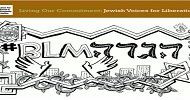At this point in the seder, Jewish communities, beset by persecution during the Crusades, opened their doors and recited the angry plea Sh’foch Chamat’cha… “Pour out Your wrath upon the nations who do not know You.”
In other communities during the same period, the hope for redemption was so intense that families sang to invoke the Prophet Elijah who, according to legend, would herald an era of Messianic peace, justice, and healing.
We open our doors now with the need to act on both impulses. The crimes of humanity that we continue to see – mass rape and torture, ethnic cleansing, the destruction of entire cities and cultures – cry out for just retribution beyond our limited capacity. And our longings for peace, for healing of earth, body and spirit, still bring the hope-drenched melody of Eiliyahu Hanavi to our lips.
With that melody we bridge our hopes for the future with our commitment to the present. We thus invite to our seders not just Elijah, harbinger of the Messiah, but Miriam, inspiration for the journey.
The Journey Continues: The Ma’yan Passover Haggadah can be purchased for $12 + $4 s/h by emailing Ma’yan, infomayan@mayan.org.










